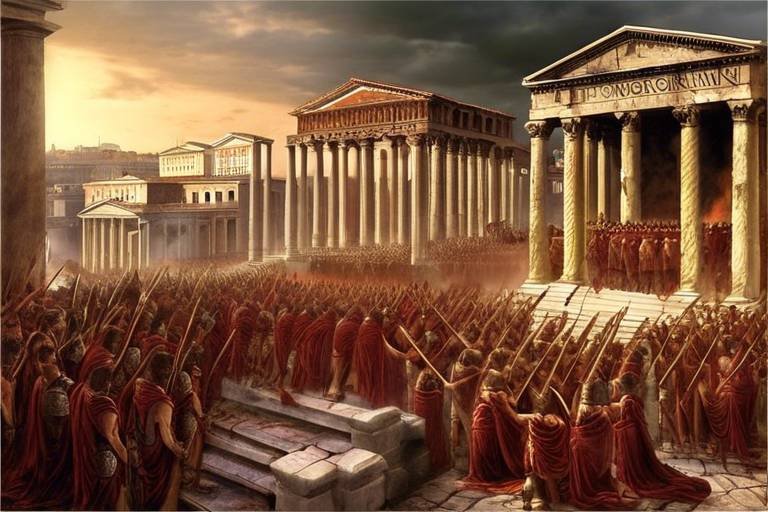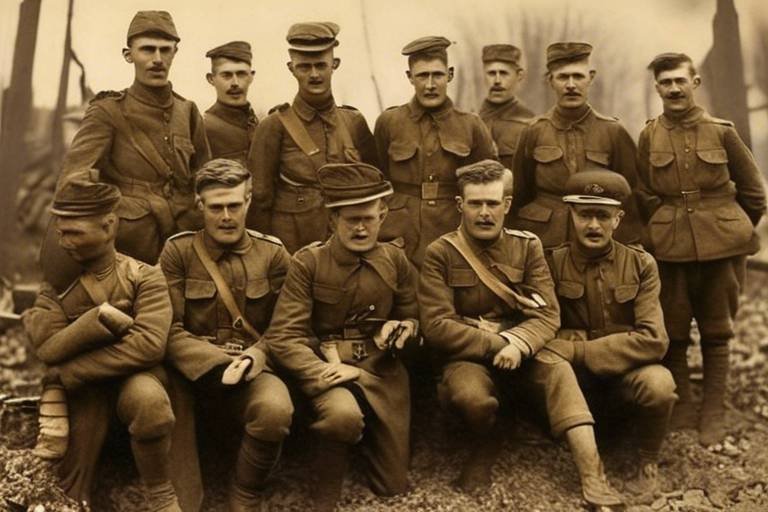The Rise of the Roman Empire - Key Events
When delving into the history of the Roman Empire, one cannot help but be captivated by the series of key events that propelled this ancient civilization to greatness. From its humble beginnings to its eventual downfall, the Roman Empire's journey is a tale of conquest, power, and legacy that continues to fascinate historians and enthusiasts alike.
The foundation of Rome itself is steeped in myth and legend, with the story of Romulus and Remus, the twin brothers raised by a she-wolf, capturing the imagination of generations. According to Roman mythology, Romulus went on to establish the city of Rome in 753 BC, laying the groundwork for what would become one of the most powerful empires in history.
As Rome grew in influence, so too did its ambitions. The conquest of Italy marked a significant turning point, as the Roman Republic expanded its control through military campaigns across the Italian peninsula. This period of expansion not only solidified Rome's power but also set the stage for future territorial conquests.
The Punic Wars, a series of conflicts between Rome and Carthage, were pivotal in shaping the destiny of the Roman Empire. Through these wars, Rome emerged as the dominant force in the western Mediterranean, establishing its naval supremacy and expanding its territorial reach across the region.
Julius Caesar's meteoric rise to power marked another crucial juncture in Roman history. His military conquests and political maneuvering ultimately led to the collapse of the Roman Republic and the emergence of Caesar as a dictator. However, his reign was cut short by assassination, triggering a period of turmoil and civil unrest.
Following Caesar's demise, Octavian, later known as Augustus, emerged as the victor in the power struggle that ensued. By defeating Mark Antony and Cleopatra, Octavian solidified his position as the first Roman Emperor, ushering in a new era and effectively bringing an end to the Roman Republic.
The era of Pax Romana, or Roman Peace, under Augustus and his successors brought a period of relative stability and prosperity to the empire. This time of peace allowed for cultural flourishing, architectural achievements, and economic growth, solidifying Rome's status as a cultural and political powerhouse.
As the Roman Empire continued to expand its borders through conquests in Europe, Africa, and Asia, it faced the challenge of governing a vast and diverse territory. The complexities of managing such a vast empire tested the limits of Roman administration and military prowess, leading to both triumphs and setbacks.
However, internal strife, external invasions, economic hardships, and political upheavals eventually took their toll on the Roman Empire. The once-mighty civilization began to crumble under the weight of its own complexities, leading to its eventual decline and fall, marking the end of an era that had shaped the course of history for centuries.

Founding of Rome
The is a legendary tale that traces back to the mythological origins of the city. According to Roman mythology, Rome was founded by the twin brothers Romulus and Remus, raised by a she-wolf. The story of Romulus killing Remus to become the first king of Rome symbolizes the city's fierce and ambitious nature from its inception. This event holds great significance in Roman history, marking the beginning of a civilization that would eventually rise to dominate the ancient world.

Conquest of Italy
The Conquest of Italy marked a significant turning point in the rise of the Roman Empire. Through a series of military campaigns and strategic alliances, Rome expanded its influence across the Italian peninsula, establishing itself as a dominant power in the region. The conquest began with the defeat of neighboring tribes and city-states, allowing Rome to assert control over key territories and resources.
One of the key strategies employed by the Romans during the conquest was the establishment of colonies and military outposts to maintain control over newly acquired lands. This not only served as a means of defense but also facilitated the integration of conquered peoples into the Roman political and social system. The Roman ability to assimilate diverse cultures and populations played a crucial role in the success of their expansion efforts.
Moreover, the conquest of Italy provided Rome with a solid economic foundation, as the fertile lands and strategic locations of the conquered territories contributed to the empire's wealth and prosperity. The acquisition of resources such as grain, timber, and minerals further fueled Rome's economic growth and military capabilities, enabling further conquests and territorial expansion.
As Rome continued to expand its control over Italy, it encountered resistance from rival powers and internal dissent. The Roman ability to adapt to changing circumstances, forge alliances, and overcome challenges was instrumental in securing its dominance in the region. The conquest of Italy laid the groundwork for Rome's future expansion into other parts of the Mediterranean and beyond, shaping the empire's destiny for centuries to come.

Punic Wars
The were a series of three wars fought between Rome and Carthage from 264 BC to 146 BC, which had a profound impact on the development of the Roman Empire. These conflicts were primarily driven by a struggle for dominance in the western Mediterranean, with both powers seeking to control key trade routes and territories.
The First Punic War (264-241 BC) marked the beginning of the struggle between Rome and Carthage for supremacy. The main point of contention was Sicily, a strategically important island that both powers sought to control. The war was primarily fought at sea, with Rome building a powerful navy to challenge Carthage's maritime dominance. The conflict ended with the defeat of Carthage and the cession of Sicily to Rome.
In the aftermath of the First Punic War, tensions between Rome and Carthage continued to simmer, leading to the outbreak of the Second Punic War (218-201 BC). This conflict is best known for the military genius of the Carthaginian general Hannibal, who famously crossed the Alps with elephants to invade Italy. Despite Hannibal's early victories, Rome eventually emerged victorious, inflicting heavy losses on Carthage and gaining control over Spain and North Africa.
The Third Punic War (149-146 BC) marked the final showdown between Rome and Carthage. Fueled by Roman resentment towards Carthage's perceived resurgence, the conflict culminated in the complete destruction of Carthage as a city and the annexation of its territories by Rome. This marked the end of Carthage as a major power in the Mediterranean and solidified Rome's dominance in the region.
Overall, the Punic Wars were instrumental in shaping the trajectory of the Roman Empire, expanding its territorial reach and solidifying its status as a dominant force in the ancient world. The conflicts also highlighted the strategic importance of naval power, military innovation, and diplomatic maneuvering in the pursuit of imperial ambitions.

Julius Caesar's Rise to Power
Julius Caesar's rise to power marked a significant turning point in Roman history, characterized by political intrigue, military conquests, and the erosion of the Roman Republic's traditional institutions. Born into a prominent patrician family, Caesar quickly ascended the ranks of Roman politics through his charisma, military prowess, and strategic alliances. His military campaigns in Gaul not only expanded Rome's territory but also solidified his reputation as a formidable general.
Caesar's political maneuvers, including forming the First Triumvirate with Pompey and Crassus, allowed him to secure a strong power base within the Roman Senate. However, his growing influence and popularity among the Roman populace posed a threat to the existing power structures, leading to tensions with the conservative faction in the Senate.
As Caesar's ambitions grew, so did the opposition against him. The Senate, fearing his increasing authority, demanded that he disband his legions and return to Rome as a private citizen. Refusing to comply, Caesar famously crossed the Rubicon River with his army in 49 BC, sparking a civil war against the forces of Pompey and the Senate.
The ensuing conflict culminated in Caesar's decisive victory at the Battle of Pharsalus in 48 BC, solidifying his control over the Roman state. Following his triumph, Caesar assumed dictatorial powers and implemented a series of reforms aimed at centralizing authority and addressing social and economic issues within the empire.
Despite his accomplishments, Caesar's rise to power was met with both adulation and animosity. His assassination on the Ides of March in 44 BC, orchestrated by a group of senators led by Brutus and Cassius, marked the end of his reign but set the stage for further political upheaval and the eventual rise of his adopted heir, Octavian.

Octavian's Triumph and the End of the Republic
Octavian, the grandnephew and adopted son of Julius Caesar, played a pivotal role in the transition from the Roman Republic to the Roman Empire. Following the assassination of Julius Caesar in 44 BC, Octavian formed the Second Triumvirate with Mark Antony and Lepidus to avenge Caesar's death and secure power in Rome. This alliance eventually led to the defeat of the conspirators, including Brutus and Cassius, at the Battle of Philippi in 42 BC.
After consolidating his position in Rome, Octavian turned against Mark Antony, who had aligned himself with Cleopatra of Egypt. The decisive naval victory of Octavian's forces over Antony and Cleopatra at the Battle of Actium in 31 BC marked the end of the Roman Republic. Following this triumph, Octavian took the title of Augustus and became the first Emperor of Rome, establishing the principate system of government.
Augustus' reign marked a significant shift in Roman politics and governance. He implemented various reforms to stabilize the empire, including the establishment of a standing army, the reorganization of provinces, and the initiation of a massive building program in Rome. Augustus also promoted a sense of stability and continuity, projecting an image of restoring traditional Roman values while centralizing power in the hands of the emperor.
The end of the Roman Republic and the rise of Augustus as the first Emperor ushered in a new era in Roman history known as the Principate. This period saw the consolidation of power in the hands of the emperor, the establishment of a stable government structure, and the beginning of the Pax Romana, a time of relative peace and prosperity throughout the empire.
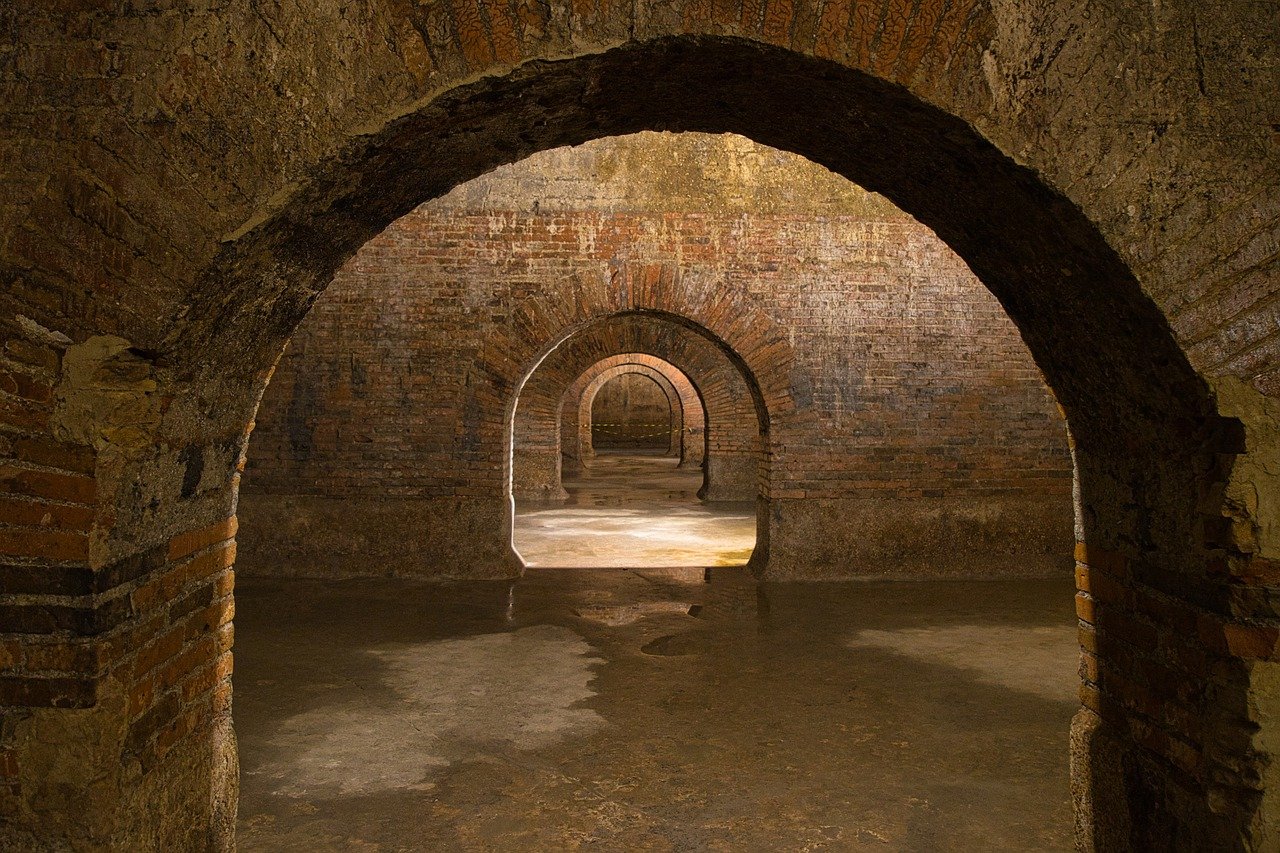
Pax Romana
The Pax Romana, also known as the Roman Peace, was a period of relative tranquility and stability that characterized the Roman Empire under the rule of Augustus and his successors. This era, lasting approximately from 27 BCE to 180 CE, marked a time of peace and prosperity across the vast territories controlled by Rome.
During the Pax Romana, the Roman Empire experienced significant cultural achievements and economic growth. The construction of monumental structures such as the Pantheon and the Colosseum showcased the architectural prowess of the Romans. Additionally, advancements in literature, philosophy, and art flourished during this period, with renowned figures like Virgil, Horace, and Ovid leaving a lasting impact on Western culture.
Economically, the Pax Romana facilitated trade and commerce throughout the empire, leading to increased prosperity and urban development. The establishment of a common currency, the denarius, promoted economic stability and facilitated transactions across vast distances, contributing to the empire's overall wealth.
One of the key aspects of the Pax Romana was the maintenance of a strong military presence to ensure peace and security within the empire. The Roman legions, disciplined and well-equipped, played a crucial role in upholding Roman authority and deterring external threats. The construction of frontier defenses such as Hadrian's Wall in Britain and the Limes Germanicus in Germany helped secure the empire's borders and maintain peace along the frontiers.
Furthermore, the establishment of efficient governance systems and infrastructure projects, such as roads and aqueducts, facilitated communication and trade across the vast expanse of the empire. This interconnected network of roads, known as the Roman road system, enabled the swift movement of troops, goods, and information, contributing to the cohesion and stability of the empire.
Overall, the Pax Romana was a period of remarkable peace, prosperity, and cultural flourishing within the Roman Empire. It demonstrated the ability of Rome to maintain order and stability across a vast and diverse territory, setting the stage for centuries of Roman influence on the development of Western civilization.
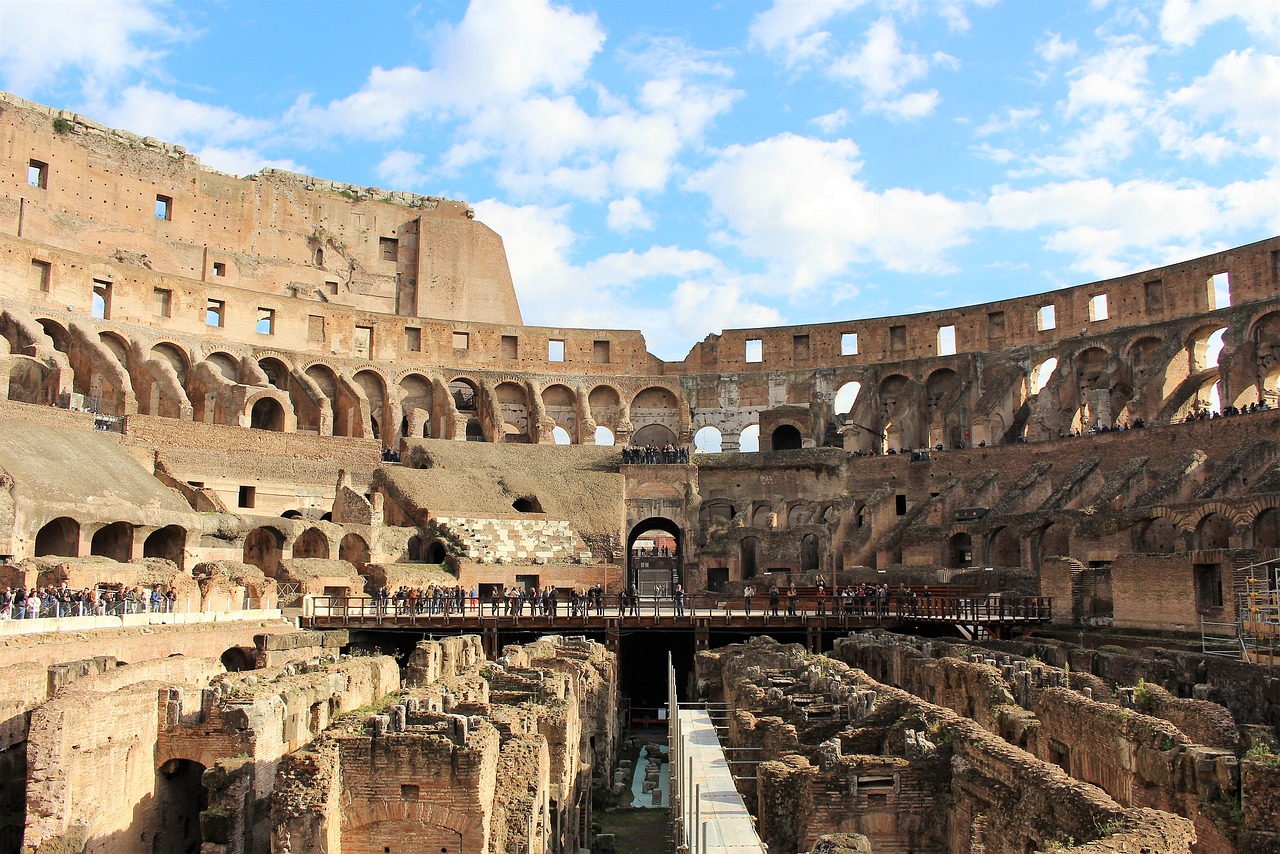
Expansion and Borders of the Empire
During its peak, the Roman Empire stretched across vast territories, encompassing regions in Europe, Africa, and Asia. The expansion of the empire was not only a result of military conquests but also of strategic alliances and diplomatic maneuvers. The Romans were adept at integrating diverse cultures into their empire, creating a melting pot of traditions and practices.
One of the key challenges faced by the Roman Empire was maintaining control over its extensive borders. The empire's frontiers were constantly under threat from external invasions, requiring the deployment of legions to defend against incursions. The construction of fortifications such as Hadrian's Wall in Britain and the Limes Germanicus in Germany served as physical barriers to protect the empire's borders.
Trade routes played a crucial role in connecting the various regions of the Roman Empire, facilitating the exchange of goods, ideas, and technologies. The Roman road network, including famous thoroughfares like the Appian Way, enhanced communication and commerce, contributing to the economic prosperity of the empire.
As the Roman Empire expanded, it encountered diverse cultures and civilizations, leading to a rich tapestry of languages, religions, and customs within its borders. The assimilation of these diverse elements into the Roman way of life contributed to the cultural vibrancy of the empire, fostering a sense of unity amidst diversity.
However, the vastness of the Roman Empire also posed administrative challenges, as governing such a geographically extensive domain required efficient communication and coordination. The establishment of provincial governments and the delegation of authority to local officials helped manage the day-to-day affairs of the empire's far-flung territories.
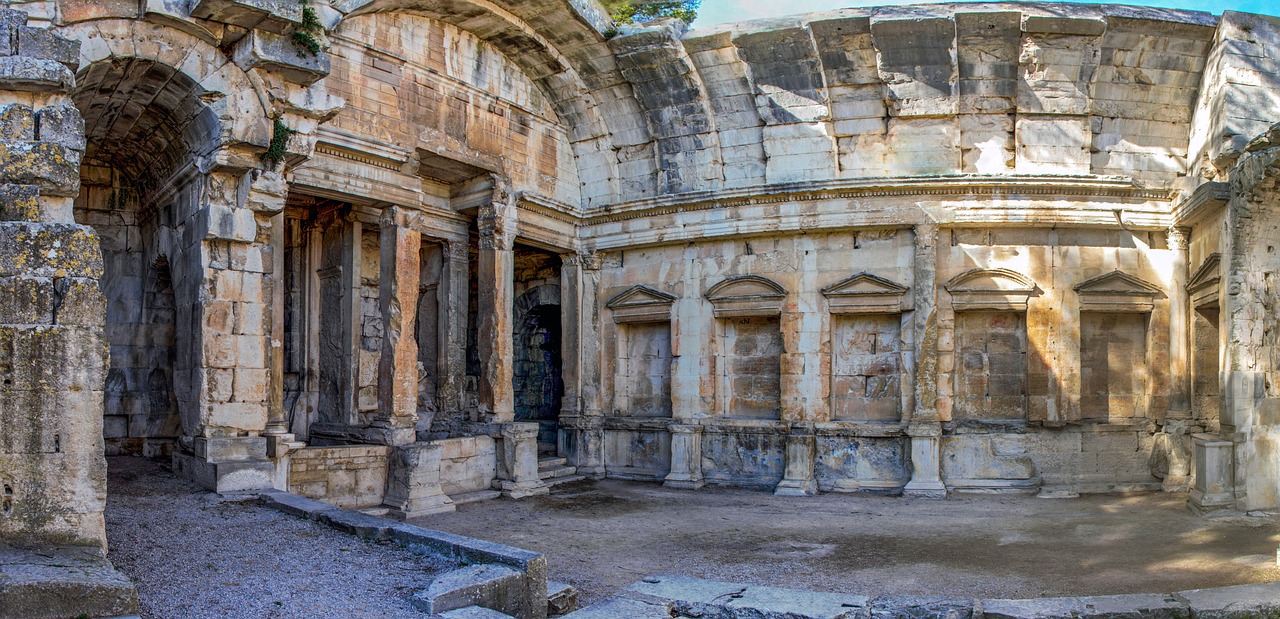
Decline and Fall of the Roman Empire
As the Roman Empire reached its peak of power and influence, it also sowed the seeds of its eventual decline and fall. The once mighty empire faced a myriad of challenges, both internal and external, that gradually weakened its foundations and led to its eventual collapse.
One of the key factors contributing to the decline of the Roman Empire was its overreliance on slave labor and the exploitation of conquered territories for resources. This unsustainable economic model, coupled with rampant corruption and inefficiency in governance, strained the empire's resources and eroded its internal stability.
Externally, the Roman Empire faced increasing pressure from barbarian invasions along its borders. The once formidable Roman legions struggled to defend the vast frontiers of the empire, leading to territorial losses and further weakening the empire's grip on its territories.
Moreover, the division of the empire into the Western and Eastern halves, with the Western Roman Empire facing more significant challenges, further exacerbated its decline. The Western half, in particular, grappled with political turmoil, weak leadership, and economic hardships that hastened its fall.
As internal strife and external threats mounted, the once mighty Roman Empire began to crumble. The sack of Rome by the Visigoths in 410 AD and the eventual deposition of the last Roman emperor in 476 AD marked the official end of the Western Roman Empire, signaling the close of an era that had shaped the course of Western civilization for centuries.
Despite its fall, the legacy of the Roman Empire endured through its contributions to law, governance, architecture, and culture, leaving an indelible mark on the world that continues to resonate to this day.
Frequently Asked Questions
- What is the significance of the founding of Rome?
The founding of Rome, as depicted in the legendary tale of Romulus and Remus, marks the beginning of Roman history and the establishment of a city that would grow into a powerful empire. This event symbolizes the origins of Roman civilization and the values that shaped its development.
- How did Julius Caesar's rise to power impact the Roman Republic?
Julius Caesar's ascent to power led to the collapse of the Roman Republic and the emergence of dictatorship in Rome. His military conquests and political maneuvers transformed the political landscape, ultimately leading to his assassination and the end of the Republic.
- What was the significance of Pax Romana?
Pax Romana refers to a period of peace and stability within the Roman Empire under the rule of Augustus and his successors. This era was characterized by cultural flourishing, economic prosperity, and relative tranquility across the vast territories controlled by Rome.
- What factors contributed to the decline and fall of the Roman Empire?
The decline and fall of the Roman Empire were influenced by a combination of internal strife, external invasions, economic challenges, and political instability. These factors, along with the empire's vast size and overextension, contributed to its eventual collapse.

